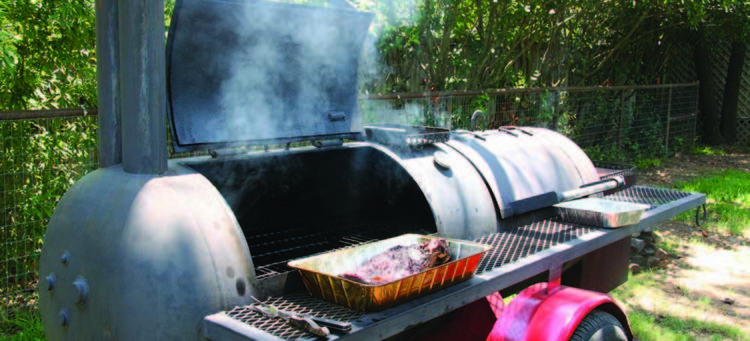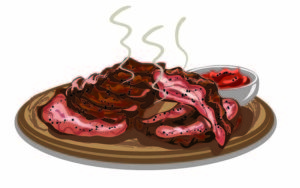
Trending
Smokers: The newest smokers carry an air of sophistication, but the simple act of infusing food with wood smoke remains a primal pastime.
June, 2018
Smoked foods have been around since the Neanderthals first tossed a hunk of wooly mammoth onto a bushfire sparked by lightning. For almost as long as we’ve known fire, we’ve been using wood smoke to cook, preserve, and flavour food. Meat, fish, cheese, hard-boiled eggs, nuts and berries, you name it—if it can be eaten, it can probably be smoked. Fortunately, we no longer have to wait for an act of god to light the kindling—with the right set-up and a little practice, it’s easy to infuse some of your favourite foods with the rich ethereal flavour of wood smoke.
The Prep
We smoke food today the same way we always have, more or less. First, for meats and fish, moisture is removed by either dry curing with salt, or wet brining and patting dry. This helps with the formation of a pellicle (gel-like skin between the meat or flesh and the seasonings), which enhances the flavour by sealing in moisture and soaking up smoke.
Hardwood fires are then used to create the smoke. Apple and cherry woods impart the mildest flavour and add a bit a sweetness; birch, hickory, and pecan are stronger; and mesquite is the most robust of all. The pitch in softwoods like pine or spruce will only impart a bitter, sooty taste that can ruin a batch of meat, so these are best avoided.
Some Like It Hot
Hot smoking, as you might guess, involves higher temperatures—about 75˚C to 122˚C (165˚F to 250˚F)—over many hours. It could take the whole day since, in this case, the smoking process is also cooking the food. Unsurprisingly, meats such as beef brisket, chicken, and pork ribs are typically hot smoked, and cooking time will depend of the weight of your meat.

Food can also be ‘cold-smoked,’ which is a bit of a misnomer because the temperature is not actually cold; it’s just lower relative to hot smoking. Cold smoking takes place between 20˚C and 30˚C (68˚F to 86˚F) over a few hours, and is done with foods that don’t need cooking or are cured in advance; think nuts, cheese, or salmon. Cold-smoked fish should be fully cured first—for food safety, and so that a proper pellicle can form. Editor’s note: If your fish is not cured, consider hot smoking at 80˚C (176˚F) to an internal temperature of 63˚C (145˚F).
Neo-Smoking
Smoking is no longer as important for preserving meat, thanks to refrigeration and added chemical preservatives (nitrates, among others). Now it’s all about flavour. As such, smoking is making a comeback as home chefs experiment and create their own unique smoked dishes.
Also playing a role is the shift toward ‘naturals’ as more people look for naturally preserved meats that have been salt-cured and smoked. While it’s true that wood smoke contributes naturally occurring nitrates (which are known carcinogens), it can also lend antimicrobial compounds, so it’s all a matter of balance and moderation.
These trends have fuelled the proliferation of backyard smokers. They now come in varying styles—offset barrel, bullet, ugly drum (not making that up), cabinet, ceramic kamados—that feature a variety heat sources (wood, charcoal, gas, electric), expanding the possibilities of this practically prehistoric process even further.
But, perhaps in keeping with the rustic roots of smoking, many instead choose to build their own smokers from whatever’s lying around. Old barbecues, refrigerators, steel barrels, trash cans, water heaters, filing cabinets—all have been turned into DIY smokers. It seems that even after thousands of years, something about smoke brings out the hunter-gatherer in us. t8n
Smoked Beverages
Rauchbier German for “smoked beer” and made from malt dried over an open flame.
Lapsang souchong A Chinese black tea with leaves that are smoke-dried over a pine fire.
Mattha A dairy beverage from India that is occasionally smoked before serving.
Suanmeitang A chilled summer drink from China is made with smoked plums.













